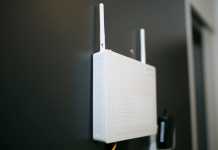
The 12VHPWR disaster is being avoided by AMD and its allies.
According to a veteran of the IT sector, AMD won’t be using the 12VHPWR power adapter connection for its next-generation graphics cards. After the news of melting GeForce RTX 4090 power connections broke on Monday, it appears that Team Red avoided a white-hot tracer bullet.
Kyle Bennett, a former HardOCP editor and ex-Intel executive, verified with a number of sources that neither AMD reference nor AIB custom designs utilising RDNA 3 GPUs have chosen to use the small 16-pin power connection standard. The Graphics Business Unit of AMD’s Scott Herkelman, SVP and GM, has also weighed in to make it plain that the company won’t be adopting 12VHPWR on its boards.
Recapping the current state of affairs, we previously reported on the initial few occurrences of melted RTX 4090 16-pin adapters. We were left wondering if this was a portent of things to come. Soon after this article was published, other accounts of melted power connections on RTX 4090 cards surfaced.
A helpful tutorial on how to properly connect the graphics card’s input to the PSU’s 16-pin power connection was also released by CableMod. The cabling is reportedly quite specific, and even little bends can result in a less-than-ideal connection. It suggests maintaining the wires’ straightness until they are at least 35mm away from the connection assembly. For practical installation in the majority of PC cases, this is a large ask.
The Navi 31 GPU-powered Radeon RX 7000 graphics cards from AMD, which are expected to be the company’s most powerful models, are reportedly sticking with the tried-and-true 8-pin PEG (PCI Express Graphics) power connections. Bennett believes that RDNA 3 graphics cards won’t use this new GPU power connection standard after speaking with his vast network of contacts at AMD and Team Red AIB partners.
In comparison to partner cards, his rhetoric regarding AMD standard designs not using the 16-pin power connection was a little more direct. But that is how the company operates. Keeping track of all the partners might be challenging, especially at this covert period when the next generation Radeon products are being developed.
Any uncertainty is seemingly eliminated by Scott Herkelman’s comment, which states categorically that “…upcoming RDNA 3 GPUs will not utilise this power connection.”
With the impending Radeon RX 7000-series flagship, some people may understandably ask why AMD didn’t choose for the 12VHPWR / 16-pin power connection (s). A handful of 8-pin connections should be sufficient for the Navi 31 GPU-powered cards, and partners may choose to create triple 8-pin designs similar to those used in the RX 6900 XT and 6950 XT models if they believe that the cards won’t require much more than already available designs.
It’s possible that AMD retreated after realising there were problems with the small 16-pin power connections during the initial testing stages. The 16-pin connector, which is provided by PCI-SIG, expands on the 12-pin connector used by Nvidia’s RTX 30-series Founders Edition cards, with the addition of four sensing pins enabling telemetry data transmission from the PSU. It’s not unexpected to see Nvidia viewing the outcome with some suspicion given the Nvidia underpinnings of the standard.
On November 3, AMD will unveil their next Radeon RX 7000-series graphics cards. It is believed that reviews and product availability will follow later that month. It’s possible that certain models won’t be available until December, and it’s unlikely that we’ll see more GPUs this year. The remaining RDNA 3 upgrades are expected to arrive in 2023.














































